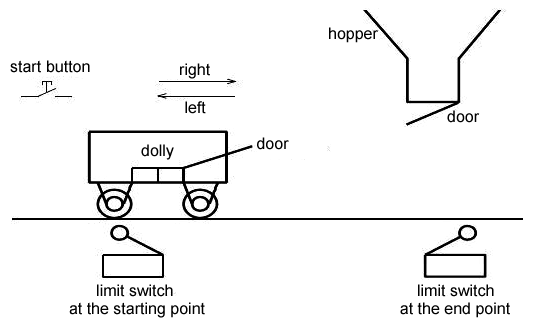Difference between Limit Switch and Proximity Sensor
Limit switch
Limit switch is used to limit the position or stroke of the mechanical movement, so that the machine automatically stops, reverses, changes speed or automatically moves back and forth according to a certain position or stroke. It can be installed on relatively stationary objects (such as fixed mount or door frames) or moving objects (such as travelling crane, door, etc.). When the object is close to the stationary object, the lever of the limit switch drives the switch contacts open or close. According to the change of the contacts open/close state, the system can control the action of the circuit and machine.
Proximity sensor
Proximity sensor can be also called non-contact limit switch. It can not only complete the stroke control and limit protection, but also realize non-contact detection. It is used to detect the size of parts, speed, or used in frequency conversion counter, frequency conversion pulse generator, liquid level control and automatic connection of processing programs. Proximity sensor is a devise that "perceives" the object approaching it. This perception distance is usually called the "detection distance". The ability to respond to continuous detection objects is called the "response frequency". Different proximity sensors have different detection distances and response frequencies.
The difference between limit switch and proximity sensor:
- Proximity sensors are non-contact switches with a long life and are suitable for passing objects. Limit switches are contact switches. Due to the internal contacts, the working life is relatively shorter.
- Limit switches are used for position detection in one direction. For two-way position detection, using a proximity sensor is better.
- Use limit switch for protection function. Use a proximity sensor to detect when an object passes a certain point.
- The limit switch usually has 1 NO + 1 NC contacts. Generally only one group of contacts is used, so there are 2 wires. Proximity sensors generally adopt 2-wire, 3-wire and 4-wire, so they have more wires than limit switches. Some proximity sensors have to confirm it is PNP or NPN based on the connected equipment.
The real use of the limit switch is in industry. It cooperates with other devices to form more complex automation equipments.
There are many such limit switches on the machine tool, which are used to control the movement of the workpiece or the stroke of the automatic feed to avoid collision accidents. Sometimes the limit switch is used to make the controlled object automatic reverse between two specified positions, so as to obtain continuous reciprocating motion.
For example, when the automatic feeding dolly reaches the destination and touches the roller lever limit switch, the dumping device is power on. After dumping all the material, the dolly returns to the starting point. When the dolly reaches the starting point and touches the limit switch, the loading device is power on and automatic loading material. And that cycle repeats it will become a set of automatic production line. Without human management, it can work around the clock and save human physical labor.

